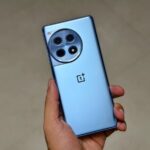
Oneplus Open
Price: $1,799 and up | Camera: 48 MP wide, 48 MP ultrawide, 64 MP 3x optical zoom, 32 MP outer selfie/20 MP inner selfie | Processor: Snapdragon 8 Gen 2 | Outer display: 6.3-inch, LPTO OLED, 120 Hz, 1,116 x 2,484 resolution | Inner display: 7.82-inch, LPTO3 AMOLED 120 Hz | Battery: 4,805 mAh | Storage: 512 GB | RAM: 16 GB
Best for: Enjoying a multitasking powerhouse for gaming, streaming and work tasks.
The best phone of 2024 might be a surprise, but its a foldable. Yes, foldables, in general, are expensive, but the Oneplus Open provides one of the best experiences you can buy on a mobile device. Despite the expense, it’s the best smartphone released in 2023—and to date. What makes it the best is excellent hardware, including a nearly creaseless folding inner screen, impressive cameras, great battery life, fast charging and really thought-out software.
Put simply, this does not feel like a first effort from Oneplus, even though it basically is. That is the main concern a potential buyer should have. This is the first foldable from Oneplus and the company has no experience supporting a foldable device. Foldables are still fairly fragile, and the Oneplus Open doesn’t come with the same IP water and dust resistance that the Samsung Galaxy Z Fold 5 and Google Pixel Fold come with. It earns the top spot on the list because of the incredible number of things it got right on its first try. While it’s not a perfect phone, it’s certainly really close.
What the writers say: In his review, Prakhar Khanna says, “The Open packs a 4,805 mAh battery that supports 67 watt fast charging that can charge the phone from 20% to full within 35 minutes. I’ve put the phone through its paces with my office work, socials, gaming, navigation and more and the battery life left me impressed.”
Pros:
- User-friendly software
- Amazing cameras
- Affordable price compared to the competition
Cons:
- No wireless charging
- No history of support
- Expensive
Best iPhone Smartphone
Double The Base Storage
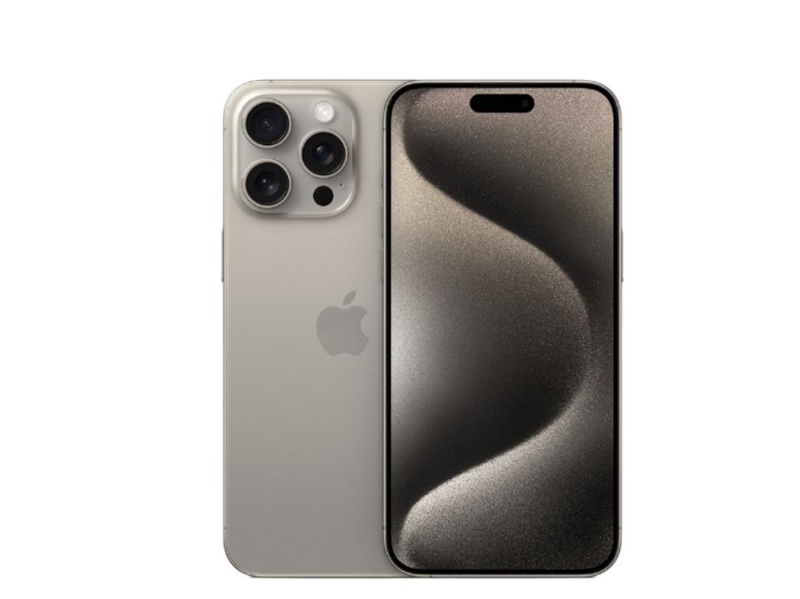
iPhone 15 Pro Max
Price: $999 and up | Camera: 48 MP wide, 12 MP ultrawide, 12 MP 5x optical zoom, 12 MP selfie | Processor: Apple A17 Bionic Pro | Display: 6.7-inch, LPTO OLED, 120 Hz, 1,290 x 2,796 resolution | Battery: 4,441 mAh | Storage: 256 GB, 512 GB, 1 TB | RAM: 8 GB
Best for: Staying in the Apple ecosystem.
Apple brought a lot of improvements to its iPhone 15 lineup of phones this year, and the iPhone 15 Pro Max is the best of the best, so to speak. Its top feature is the blazing-fast A17 Bionic Pro processor that can handle AAA title gaming and a ton of on-device photo processing. When you add that to the improved iOS 17 software and powerful 5x optical zoom cameras, the Pro Max is a force to be reckoned with.
It’s very expensive because Apple increased the base storage on the device for this year (256GB, up from 128GB) and added $100 to its price tag. Plus the expansive 6.7-inch screen will not be for everyone—especially those with smaller hands. But if you want the very best that Apple can offer, this is it. If you prefer a smaller version, the iPhone 15 Pro is also a great offering, but the telephoto lens gets stepped down to 3x rather than 5x. All told, that’s still a great offering.
What the writers say: In his review, Apple expert David Phelan says, “For sure, this is the best iPhone Apple has ever made. Well, you might expect that. And by deleting the 128 GB storage level—the iPhone 15 Pro Max comes in 256 GB, 512 GB and 1 TB storage capacities—Apple has managed to peg the price to keep it the same as the 256 GB model from last year.”
Pros:
- Increased base storage
- Great cameras
- Solid Apple ecosystem
Cons:
- Expensive (and increased starting price)
- Hard to use one-handed
Best Affordable iPhone Smartphone
iOS At An Affordable Price
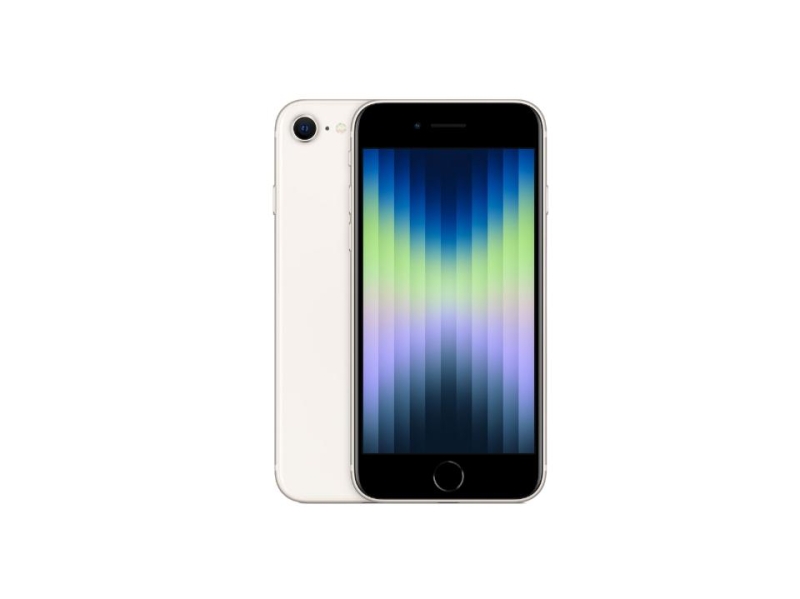
iPhone SE (2022)
Price: $429 and up | Camera: 12 MP wide, 7 MP selfie | Processor: Apple Bionic A15 | Display: 4.7-inch, Retina IPS LCD, 750 x 1,334 resolution | Battery: 2,018 mAh | Storage: 64 GB | RAM: 4 GB
Best for: Keeping in the Apple family at an affordable price.
The iPhone SE is the perennial “small phone” competitor in this space. Rather than just making a midrange phone, Apple packed some punch into its diminutive iPhone offering. The Apple Bionic A15 processor is very fast, and it’s that processor that ensures that the iPhone SE will have a long support life, receiving operating system updates for years to come.
The iPhone SE is also the last remaining iPhone with TouchID, Apple’s fingerprint sensor. FaceID has come a long way and is a really good biometric unlock mechanism, but TouchID is a sort of nostalgic play that will keep those who prefer the fingerprint reader happy.
The iPhone SE only has a single rear-facing camera, and it’s not very good. It can capture good photos when the lighting is good and your subjects are still, but overall, it’s not a shining example of Apple’s photographic excellence. But you get everything else associated with Apple, including the ecosystem support, meaning the iPhone will work just as well with your MacBook as an iPhone 15.
What the writers say: Apple expert David Phelan also reviewed the iPhone SE at its launch and says, “This is the perfect my-first-iPhone and will bring lots of people who’ve tried Android and want to see what all the Apple fuss is about across. That’s down to two things: It offers astonishing performance, and it’s available at a very low price.”
Pros:
- Small but mighty phone
- Fingerprint reader
- Long software support
Cons:
- Battery life is not great
- Single rear-racing camera
Best Android Smartphone
AI Upgrades Meet Android
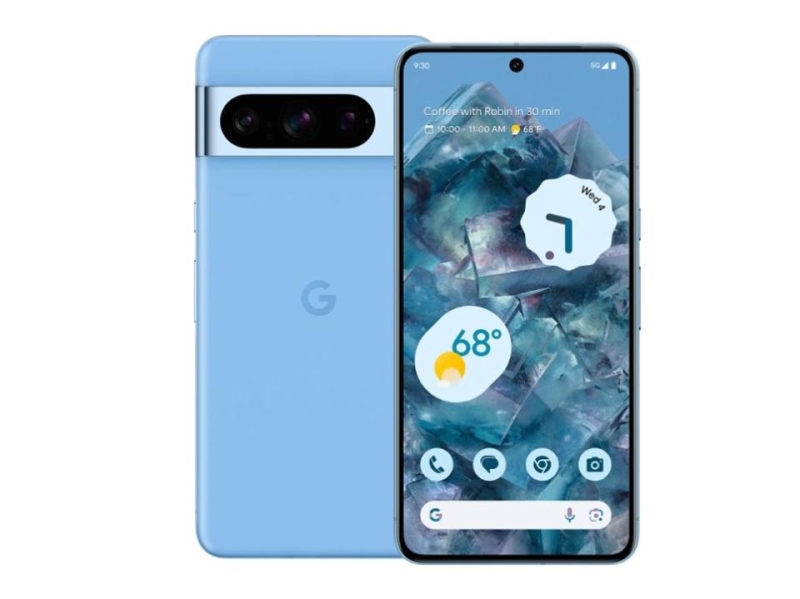
Pixel 8 Pro
Price: $999 and up | Camera: 200 MP wide, 12 MP ultrawide, 10 MP 3x optical zoom, 10 MP 10x optical zoom, 12 MP selfie | Processor: Google Tensor G3 | Display: 6.7-inch, LPTO OLED, 120 Hz, 1,344 x 2,992 resolution | Battery: 5,050 mAh | Storage: 128 GB, 256 GB, 512 GB, 1 TB | RAM: 12 GB
Best for: Getting the absolute top Android experience on the market.
The Google Pixel 8 Pro is one of the best Android experiences you can ask for on a smartphone. In addition to being attractive, it’s also a great showcase of what Android as an operating system can do, because it can do a lot. They come with certain Pixel-exclusive features like call screening, phone tree navigation, live captions and more. Google also rolled out AI improvements last year like Magic Editor for photos, webpage summaries and an AI spelling and grammar checker to improve your writing. Combine this with one of the best camera sets that comes on the back of a phone, and you have a very impressive piece of hardware.
Google increased the prices of its phones this year, so the Pixel 8 Pro starts at $999. Despite the cameras being otherwise excellent, nighttime videography is not the best and feels shockingly subpar for a typical flagship phone. Google also added Night Sight for video which can dramatically improve your night time video through cloud processing, but there are some caveats. The main limitation is that Night Sight for video capture is entirely done in the cloud so your video needs to upload and process for a long time before the final product can be seen.
From the review: Mobile expert Adam Doud reviewed the Google Pixel 8 Pro and loved the camera. “One area that is surprisingly useable is 30x digital zoom,” he said. “You’ll need to pick the right subject, but in general, the 30x zoom can produce some very usable results, a delightful surprise that most flagships cannot replicate.”
Pros:
- Clean software
- Amazing cameras
- Great camera tricks after the shot
Cons:
- Nighttime videography is not the best
- AI features may not be for everyone
Best Smartphone For Photography
Improved Nightography For Your Concerts

Samsung Galaxy S24 Ultra
Price: $1,299 and up | Camera: 200 MP wide, 12 MP ultrawide, 10 MP 3x optical zoom, 50 MP 5x optical zoom | Processor: Snapdragon 8 Gen 3 | Display: 6.8-inch LTPO AMOLED 2X 120 Hz | Battery: 5,000 mAh | Storage: 256 GB, 512 GB, 1 TB | RAM: 12 GB, 16 GB
Best for: Taking stunning shots during the day and after the sun goes down.
If you want the best photographic chops you can find on a smartphone, look no further than the Samsung Galaxy S24 Ultra. Samsung has long been leading the charge in smartphone photography and optics due mostly to the four camera sensors on the back of its Ultra line. Those cameras include a 200-megapixel main camera and a 50-megapixel 5x optical sensor that replaces the old 10x optical sensor.
That change is controversial, because on paper, it seems like a step back. In reality, the larger sensor allows a photographer to capture even more detail at 10x zoom with zero loss by cropping in on the sensor. The larger sensor can collect more light which leads to better performance at night as well. Add to that the already impressive array of other cameras that this phone carries, and you’ll be hard pressed to find a photographic scenario for which the Samsung Galaxy S24 Ultra cannot handle.
But the phone is the most expensive phone you can buy that doesn’t fold in half. If you decide to go with Galaxy S24 Ultra, it would be great if you had a phone to trade in to help take the sting off that $1,300 price tag. But if you can, you get the best processor and storage configurations that start at 256 GB and go up from there. Yes, this luxury costs a lot, but you get a ton in return. The phone will last a long time to come, thanks to the seven years of software and security updates Samsung announced at January’s Samsung Unpacked.
What the editors say: Tech editor Rebecca Isaacs tested the device and loved the cameras, saying, “By far, the AI integrations, which include analyzing your photos and optimizing them even before you snap them, were my favorite features on this device. I snapped shots of the Winchester Mystery House at night on both the S23 Ultra and S24 Ultra and compared them in real-time. The Nightography looks much clearer and more focused, with high detail and more vivid coloring compared to the S23 Ultra’s lens.”
Pros:
- Fabulous, versatile cameras
- Incredible battery life
- 7 years of software updates
Cons:
- Expensive
Best Foldable Smartphone
Samsung’s UI In a Foldable Device
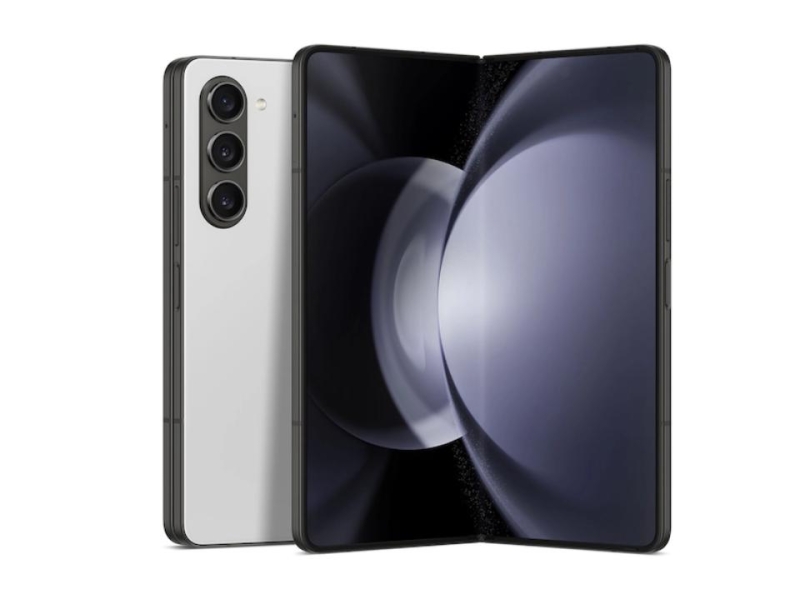
Samsung Galaxy Z Fold 5
Price: $1,800 and up | Camera: 50 MP wide, 12 MP ultrawide, 10 MP 3x optical zoom, 10 MP outer selfie, 4 MP inner selfie | Processor: Snapdragon 8 Gen 2 | Outer display: 6.2-inch, Dynamic AMOLED, 120Hz, 904 x 2,316 resolution | Inner display: 7.6-inch, Dynamic AMOLED 120 Hz | Battery: 4,400 mAh | Storage: 256 GB, 512 GB, 1 TB | RAM: 12 GB
The Samsung Galaxy Z Fold 5 is one of the best foldable phones you can buy. Samsung has been working on foldable phones for five years now, far outdistancing its closest rival, not by months, but by years. What that means is, overall, Samsung has by far the most experience when it comes to building and supporting a folding form factor. But Samsung has also been stuck in a bit of a rut for a couple of years now.
Rather than meaningfully improving its already great design, Samsung has focused more on iterative updates for the past two years. While the overall experience on the phone has improved, Samsung has been held back by some annoying traits that it never had to improve. The cover screen is exceptionally tall and narrow, which may be good for those who want to use the phone one-handed, but isn’t great for those who don’t necessarily want to open the phone all the time.
Still, it’s hard to argue with what Samsung brings to the table. You get a very complete package in this phone that is great in a lot of situations, and has a lot of app support for the inner screen. Samsung has a lot of competition now, so it’ll be interesting to see what the company does going forward. But right now, it still has a really great offering, if you’re looking for a book-style foldable, and you’re not ready to buy into either of its first-generation competitors.
Pros:
- 5 years of R&D and support
- Amazing Displays
- Great cameras
Cons:
- The cover screen is too tall and narrow
- Thick
- Expensive
Best Affordable Smartphone
Apps At Your Fingertips For Only $300
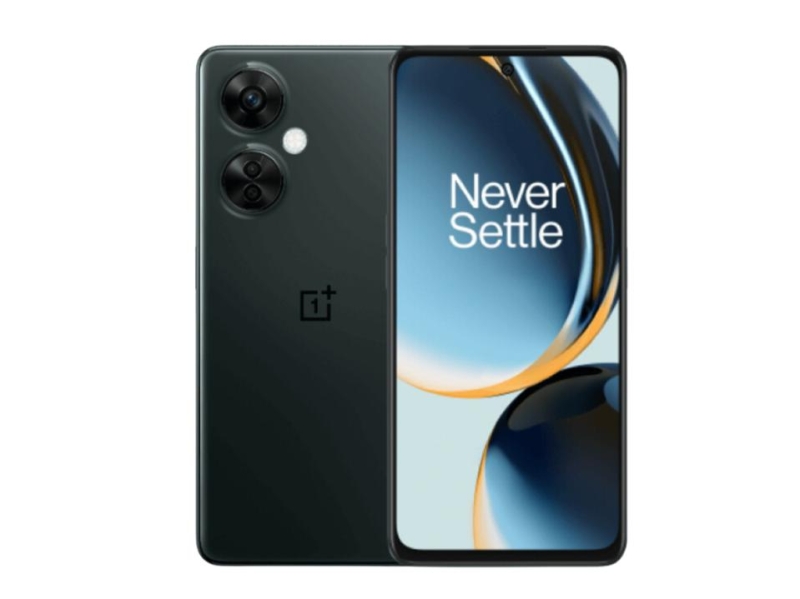
Oneplus Nord N30
Price: $300 and up | Camera: 108 MP wide, 2 MP macro, 2 MP depth, 16 MP selfie | Processor: Snapdragon 695 | Display: 6.72-inch, IPS LCD 120Hz, 1,080 x 2,400 resolution | Battery: 5,000 mAh | Storage: 128 GB | RAM: 8 GB
Over the past few years, Oneplus launched the Nord series of phones which is meant to tackle the budget end of the smartphone spectrum, and it does with some impressive specifications of its own. Notably, the Nord N30’s 108-megapixel main camera can give you 3x lossless zoom, which is basically unheard of on a phone in this segment. And, I would be remiss if I didn’t mention it’s one the few devices on the market that has a headphone jack for wired listening.
But the design of the phone is rather uninspired, aping considerably off its last generation phone, the Oneplus Nord N20. Additionally, the back of the phone is adorned with two very large camera bumps. The other two cameras are limited to just 2 MP each—one for macro shots and one for measuring depth of field. To be frank, they’re not terribly useful in any situation.
But otherwise, the Oneplus Nord N30 packs a decent processor with a lot of RAM (for its price point) and a large, 5,000 mAh battery that comes with 50W of fast charging. That’s a lot to offer in a phone that starts at $300.
Pros:
- Solid processor for most tasks
- Great battery life and fast charging
- Headphone jack
Cons:
- Additional cameras are mostly useless
- Questionable design choices
Best Smartphone For AI
Handy And Affordable Features At Your Fingertips
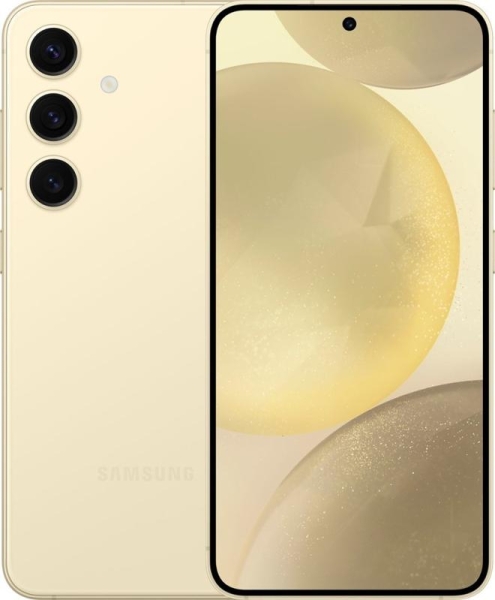
Samsung Galaxy S24
Price: $799 and up | Camera: 50 MP wide, 12 MP ultrawide, 10 MP 3x optical zoom, 12 MP Selfie | Processor: Snapdragon 8 Gen 3 | Display: 6.2-inch LTPO AMOLED 2X 120 Hz | Battery: 4,000 mAh | Storage: 128 GB, 256 GB, 512 GB | RAM: 8 GB, 12 GB
Best for: Getting useful AI features without paying extra.
This year, Samsung went seemingly all in on AI features built into its flagship phones, including the Samsung S24. In fact, most of the hardware between last year and this year stayed the same (or got a typical yearly bump). Notably the processor at the heart of the phone, the Snapdragon 8 Gen 3 has a ton of AI capability built into its NPU, or neural processing unit. Not only does this enable AI features, but it also allows many of them to be performed on the device.
Samsung’s AI features built into the S24 can help you search for products, translate foreign languages in near-real time, transcribe audio coming out of your phone, make suggestions for video edits and more. One notable addition is called Browsing Assist. Basically, your phone can take a long web page and summarize it for you in seconds, saving you time.
It remains to be seen if AI will be the transformation Samsung thinks it will be. But in the meantime, the Galaxy S24 is still a capable smartphone even without those features. The 6.2-inch screen is in the sweet spot for holding comfort and the cameras are among the best you can find on the base version of a flagship phone.
Pros:
- Smart AI features
- Great cameras
- Fast processor
Cons:
- Not much new in this generation’s hardware
- AI features might be very niche
How We Chose The Best Smartphones
Here at Forbes Vetted, one of our favorite hobbies is tinkering with phones—so much we’ve even talked about them on podcasts. We’ve tested nearly every single flagship device that has been recently released, including our top pick, the Oneplus Open, and Samsung’s latest launch, the Samsung Galaxy S24 launch at Samsung Unpacked 2024.
To decide on the best smartphones, we combined our hands-on, real world testing and experience alongside robust research and user reviews. In addition to speaking with industry experts and product leaders, we also attended briefings held by various tech companies to get in-depth insight to the device updates and improvements over the years.
In addition to our research, we carefully evaluated each smartphone’s features including display, processor, cameras and more, and compared it to the other market offerings. Rest assured, these are the best smartphones you can purchase in 2024.
- The Forbes Vetted tech team consists of accomplished tech experts who’ve (literally) written books on the subject. In particular, this story was written by Adam Doud, an accomplished writer, journalist, photographer and experienced product tester.
- Adam is a Chicago-based freelance reviewer and has been writing about consumer electronics for over a decade with a focus on mobile phones and cellular technology, including the birth of 5G. He has also tested almost every major phone on the market over the last several years. When he’s not testing the latest and greatest flagship phones, he’s hosting the Benefit of the Doud podcast/YouTube channel with his co-host Clifton M. Thomas and editing technology news articles for SlashGear.
- The tech section is overseen by consumer tech and electronics editor Rebecca Isaacs, an expert who has extensive experience going hands-on with devices, including reviewing the Samsung Galaxy S24 Ultra when it launched.
- Because there are new smartphone announcements and launches throughout the year, this story is regularly updated. Its most recent update occurred in March 2024 to expand buying advice, including adding frequently asked questions, to help you make an informed buying decision.
Does It Matter If I Opt For iOS Or Android For My Smartphone?
In short: no. Both systems are solid in terms of performance, but the first consideration when choosing your smartphone should be which operating system you’re using and whether or not you’re happy with it. For Android, you have plenty of options, from the Google Pixel 8 Pro to the Samsung Galaxy S24 Ultra and the hybrid system the Oneplus Open uses. Apple’s iOS comes on all the iPhones, including its new flagship, the iPhone 15 Pro Max.
If you’re not happy with your current operating system, maybe it’s time to try something new. If you like your operating system and just want something newer, then sticking with the same manufacturer might be a good idea. It all comes down to your personal preference; both operating systems are great, but in case you’re not sure, we also break down the differences between iPhone and Android.
How Do I Determine The Right Price Range For A Smartphone?
The answer to this question lies in your budget, and whether you’re buying a phone from a carrier or paying for it outright. Even though the Samsung Galaxy S24 Ultra costs $1,419, you might be able to pick it up for much less if you go into a carrier store and have a phone to trade in.
On the other hand, if you’re buying a phone outright from the company’s website, Amazon or Best Buy, you’ll likely have to pay the full cost up front, minus any deals you might qualify for. It’s important to do your homework in this regard so you can know how much you’ll owe—and how much you can save.
How Do Carrier Trade-Ins Work?
A lot of carriers offer money for an older phone, often more than it’s worth. You can then apply that money toward the purchase of a new phone, thus the “trade-in.” If you trade-in a smartphone, your carrier will likely pay out this bonus over the life of your agreement (typically two years, but check the fine print).
Let’s say you buy a new smartphone and agree to get a $480 trade-in bonus. That means you will get a discount that totals $480 over the course of your phone’s contract. If it lasts the typical two years, means that you pay $20 less per month for your device while you pay off the difference. So, if you were to pay $50 for your device over two years but have that $480 trade-in offer, you’d only pay $30 per month, reducing the overall cost.
If you cancel your contract with your carrier during the agreement, not only will you owe the remaining balance of your payments, but you’ll also owe the balance of the trade-in bonus, however much may remain. And, sometimes companies may require you to pay the full cost of the trade-in if you cancel the contract early. No matter what, you want to read the fine print of your contract so you understand the trade-in terms and what happens if you decide to break it.
What Are Some Signs I Need To Replace My Current Smartphone?
There are plenty of reasons why you might want to get a new phone. Here are just a few of them:
- Your phone is slowing down: Often if you have an older phone, its performance will start to suffer over the long term. You can mitigate this by wiping and reinstalling your phone every now and then, but that’s annoying. New phones probably won’t have performance issues.
- Its software is out of date: Most manufacturers have limits as to how long they provide new software and security updates for your device. Lately, that time limit has been getting longer with some manufacturers offering a full seven years of support. Other phone makers will give you four years or even less. Read the fine print before you buy to maximize your phone’s lifespan.
- Switching carriers: If you bought your old phone through your cellular carrier, there’s a good chance it may not work on a different carrier, so you may have to buy a new phone.
- You want new features: Some phones come out with new features every year, and some of those new features may not make it to your older phone. If there’s a particular feature that you want, you might have to upgrade to get it.

